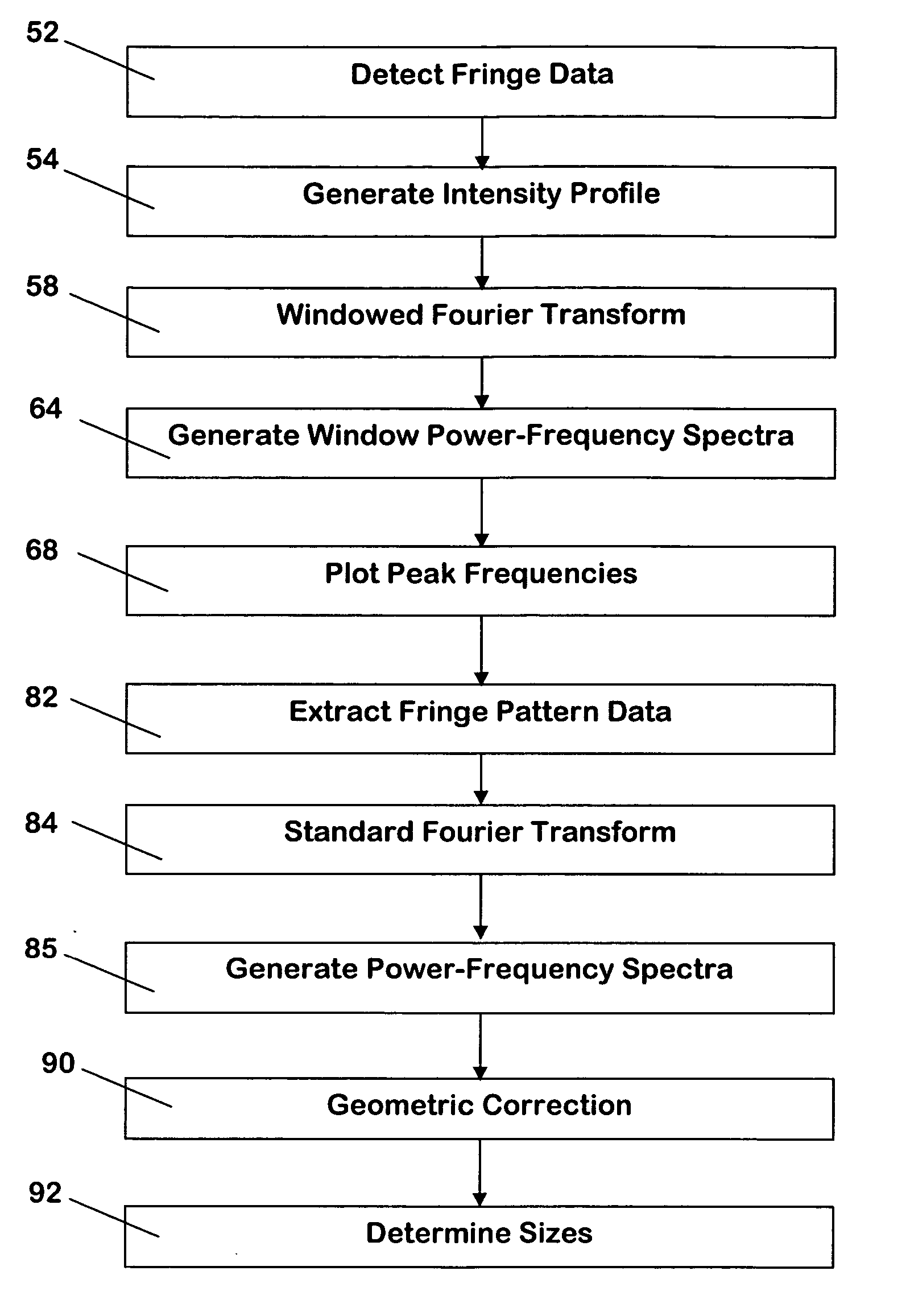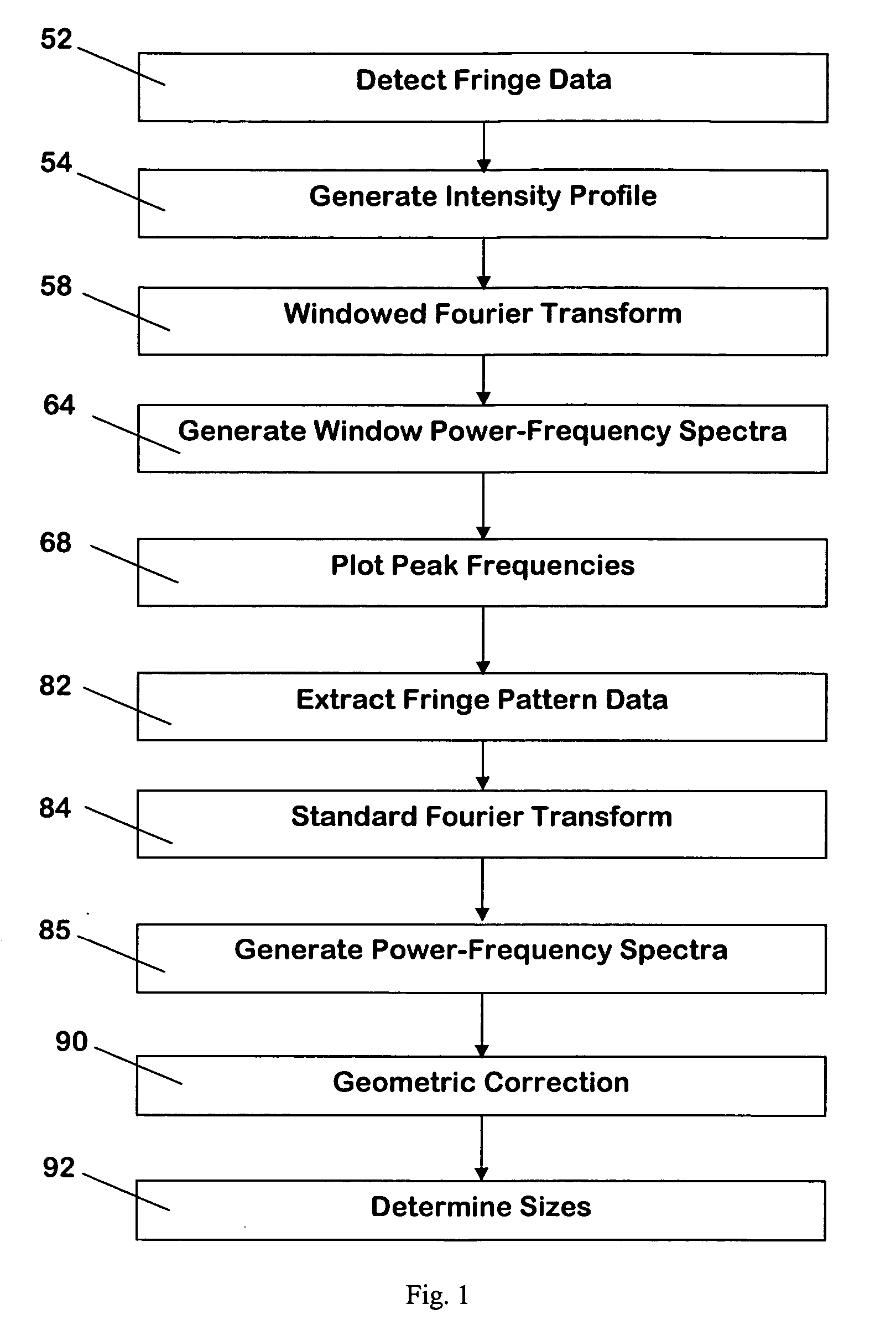Analysis of signal oscillation patterns
a signal oscillation pattern and analysis technology, applied in the field of analysis of signal oscillation patterns, to achieve the effect of facilitating the differentiation of segments of original fringe pattern data
- Summary
- Abstract
- Description
- Claims
- Application Information
AI Technical Summary
Benefits of technology
Problems solved by technology
Method used
Image
Examples
Embodiment Construction
[0028] Turning now to the drawings, FIG. 1 is a flowchart illustrating a preferred process for analyzing fringe pattern data to obtain the desired physical information, for example particle sizes in the interferometric particle sizing application. The original fringe pattern data are largely associated directly with particle size or velocity or other physical information depending on the application, and therefore are useful. However, the fringe pattern data also include extraneous data associated with noise, non-spherical particles, and multi-particle effects. Most extraneous data are of limited or no utility and complicates the analysis of fringe pattern data. According to an embodiment of the present invention, windowed Fourier transforms and peak frequencies are employed to distinguish the useful data from the extraneous data and extract the useful data. Subsequent processing steps are performed only on the extracted data, resulting in more reliable particle and droplet characte...
PUM
 Login to View More
Login to View More Abstract
Description
Claims
Application Information
 Login to View More
Login to View More - R&D
- Intellectual Property
- Life Sciences
- Materials
- Tech Scout
- Unparalleled Data Quality
- Higher Quality Content
- 60% Fewer Hallucinations
Browse by: Latest US Patents, China's latest patents, Technical Efficacy Thesaurus, Application Domain, Technology Topic, Popular Technical Reports.
© 2025 PatSnap. All rights reserved.Legal|Privacy policy|Modern Slavery Act Transparency Statement|Sitemap|About US| Contact US: help@patsnap.com



